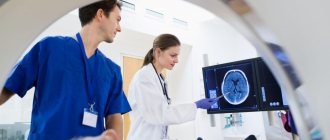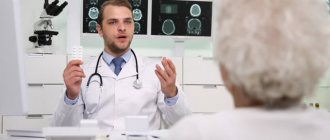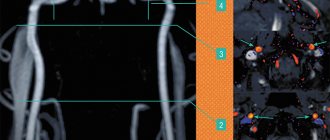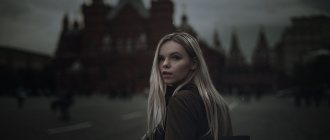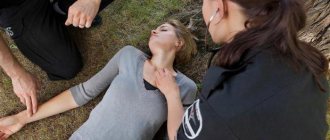Magnetic resonance imaging is a hardware diagnostic method that is used in medical centers to obtain the most anatomically accurate images of the patient’s internal organs and tissues. Diagnostics is carried out in a non-invasive way, that is, no instruments are introduced into the patient’s body, and no punctures are made. From the point of view of the subject, the main advantage of MRI is the comfort and safety of the procedure. Doctors value magnetic resonance imaging for its:
- high tissue contrast;
- informative and comprehensive assessment of all body tissues;
- high sensitivity during oncological search.
Since the examination method does not involve any radiation exposure, it is available to a wide range of patients, including young children, pregnant women, cancer patients and the elderly.
Free diagnostic consultation
If in doubt, sign up for a free consultation. Or consult by phone
+7
All about diagnostics
How does an MRI machine work?
The operating principle of a magnetic resonance imaging scanner is based on the effect of nuclear magnetic resonance. The installation itself consists of a scanner with a powerful magnet inside and a computer installation that analyzes the data and displays it on the monitor in the form of three-dimensional three-dimensional images. When the patient's body enters the scanning device, it is exposed to a strong magnetic field and radio frequency pulses. This causes vibrational movements in the protons of the hydrogen atoms of the body's cells. The computer reads these resonant pulses and builds tomograms - three-dimensional images - based on them.
The more water is contained in the tissues of the body, the better the resonance effect will be, and the organs will appear more accurately and in more contrast in the photographs. Since the human body is 70% water—blood is 98% water, muscle is about 75%, and bone is about 28%—most tissue will show up very well on an MRI. The only exceptions would be the chest organs: lungs, bronchi, since they contain a lot of air and little water. Bone structures are also difficult to visualize on MRI. The water content in bones is minimal, so they are displayed on tomograms, but not clearly enough to fully judge the quality of bone tissue. The optimal method for examining the chest organs and bones will be x-ray diagnostics - computed tomography and radiography.
| OPEN TYPE MRI | CLOSED MRI |
What to take with you to RT?
Come at the appointed time with your passport, printed pass, gel or capillary pen. Know that you will need the same documents and things at the CT.
You can take a calculator to the test exam in physics and chemistry. But it’s better to leave the cheat sheets at home, because they can get you removed from the class.
It’s worth preparing from the beginning of the year. For example, after the first RT, I saw that I had problems, and signed up for courses. In my opinion, classes give 50% of the result. Everything else is independent work.
Alexey Savich, graduate of training courses for DT in Adukar
Magnetic resonance imaging and its varieties
In MRI centers, tomography can be performed using several basic protocols:
- Native MRI;
- MRI with contrast
- Magnetic resonance angiography.
The basic MRI procedure is called non-contrast or native tomography. This is what is used in most cases. During this examination, the focus of the scan is soft and bone tissues, and the patient’s internal organs.
The procedure for magnetic resonance imaging with contrast is a special protocol during which, in addition to the native scan, an examination is performed when a special contrast compound is injected into the patient’s body. In most cases, a drug based on salts of the rare earth metal gadolinium is used for contrast enhancement. The purpose of a contrast agent is to maximize tissue contrast. Due to this, doctors have the opportunity to more clearly visualize all small formations, search for metastases and very small foci of inflammation. Based on the type of contrast accumulation and release, the radiologist can judge whether the tumor is benign or malignant.
If the subject of examination is the human vascular system, an MR angiography protocol is used. During it, the computer program is set in such a way that only the vascular bed is visualized in the images. Using the angioprogram, doctors can assess the condition of arteries and veins and identify most vascular pathologies, for example, occlusions, malformations, kinks, aneurysms, bifurcations, ruptures and intimal tumors.
Select your city
REHEARSAL TESTING
WHAT IS PT AND WHY DO YOU HAVE TO TAKE IT?
Rehearsal testing (RT)
is a kind of dress rehearsal before passing
the Centralized Test (CT)
. This means you need to approach it just as responsibly! The atmosphere of the trial testing and - most importantly - the tasks are very similar to what awaits you on the main test.
Moreover
, upon completion of the RT, you will receive a detailed solution to the assignments, with the help of which you can, together with the teacher or independently, work on mistakes and have time to eliminate gaps in knowledge before the CT.
Conducted by the RT Republican Institute of Knowledge Control
(RIKZ). On the website you will find a reminder for the participant of the Rehearsal Test. In turn, “100 POINTS” tried to answer basic questions about RT.
ADVICE FROM “100 POINTS”
Important aspect
–
psychological!
Rehearsal testing is also a moral preparation for the main test.
During RT you will learn:
- register for testing;
- go through the control system at the testing point;
- Fill out answer forms quickly and without errors;
- distribute time when performing difficult and easy tasks;
- solve tests without the help of textbooks, notes, tips from teachers and classmates;
- use the drafts that are given during testing;
- behave in the classroom without being distracted by your desk neighbors.
Every point is important!
All this together will increase your confidence during Centralized testing and allow you to focus your main efforts on the result.
STAGES OF RT IN THE 2020-2021 ACADEMIC YEAR
Traditionally, rehearsal testing takes place in three stages. For the 2020-2021 academic year, the RT schedule is as follows:
- Stage 1 - October-December 2021
- Stage 2 - January-February 2021
- Stage 3 - March-April 2021
Applicants also have the opportunity to take rehearsal testing on-line on the RIKZ website. There is a fee for the exam and registration is required. Here you will find detailed instructions for RT on-line.
PLEASE NOTE:
the conditions of
on-line
differ from those that applicants take at testing points.
“100 POINTS”
strongly recommends taking both tests at each stage - in person and online!
Another good opportunity to practice solving tests is Remote Rehearsal Testing. Tests in 15 academic subjects are available on the RIKZ website. You can go through them for free, without registration and an unlimited number of times.
ADVICE FROM “100 POINTS”
It is better to participate in all three stages
rehearsal testing. And do this at the end of each stage in order to have time to study as much material as possible. It is better to go to the third stage twice and complete two different options (currently this is only available for applicants in Minsk) - this way you will be able to solve the largest number of tasks. And many of them are often similar to those tasks that are found on the CT.
Please note that each missed RT stage is minus 5-10 points from the CT result!
EVA GILEVICH, TUTOR IN ENGLISH AND BELARUSIAN LANGUAGES
“I advise students to participate in all stages of RT so that they can see their progress in their studies and improve their level of knowledge at each next stage. And the result of the third stage of the RT (it is closest in content to the CT) should become for the student the bar below which it is impossible to pass the entrance exam.”
VALERIYA MALAKHOVA, GRADUATE, BSEU STUDENT
“Be sure to visit all three stages of the RT. From my own experience, I will say that this is a good opportunity to mentally prepare for the DT. The situation in both tests is almost the same. This way you can test your knowledge in a stressful situation.”
WHAT SUBJECTS IS PT CONDUCTED IN AND WHICH SUBJECTS TO CHOOSE?
Rehearsal testing is carried out in 15 academic subjects
, which will subsequently be presented at the CT. The list of items is as follows:
- Russian language
- Belarusian language
- Physics
- Mathematics
- Chemistry
- Biology
- English language
- German
- Spanish
- French
- History of Belarus
- Social studies
- Geography
- World history (modern times)
- Chinese
ADVICE FROM “100 POINTS”
We recommend that you take PT in those subjects that you are going to take at the Centralized Testing
. If you are in doubt about the choice (for example, Russian or Belarusian), take a trial test in both subjects. The result will help you make your choice and make it clear where you need to deepen your study.
ELENA LISOWSKAYA, RUSSIAN LANGUAGE AND LITERATURE TUTOR
“I advise students to use test books from previous years. It is ideal to take the collection over 5 years and take as many tests as possible in order to understand which topics have been mastered worse, and based on this, continue preparing. You must attend all stages of the trial testing - this way you will find out your level of knowledge, expressed in points, and learn how to properly allocate time for completing tasks. With proper effort, you can increase your result from stage to stage by 15 points.”
HOW TO REGISTER AT RT?
Becoming a RT member is easy and quick!
Since 2021, unified registration takes place on-line on the RIKZ website. On the same website you will find all the points where rehearsal testing will take place (the final list appears after the conclusion of RIKZ agreements with educational institutions), as well as the date and time of the tests (each educational institution sets them independently).
ADVICE FROM “100 POINTS”
When registering on the RIKZ website
Your personal account is created once and for all, so remember (or better yet, save and write down!) your password. Subsequently, from your account you will be able to manage your actions (for example, register for additional testing or reschedule the PT test date). Test results, as well as solutions to assignments and links to useful literature will be sent to your Personal Account.
WHERE AND HOW TO PAY for RT?
Important: registration for RT is considered completed only after payment.
For the 2020-2021 academic year, the cost is
7.60 rubles
per academic subject.
Payment must be made within 24 hours
after submitting the application.
The service is paid ONLY
through
the “Calculation” system of the unified settlement space (ERIP).
You will find step-by-step instructions on how to pay or cancel your RT application here.
You can pay for participation in RT from home
– using Internet banking or mobile banking.
Using a bank card
- through an information kiosk, payment terminal or ATM.
Cash
– at any bank (we warn you: banks may charge a commission).
WHAT CAN YOU TAKE ON YOUR RT?
- Identity document (passport, birth certificate);
- Printed RT participant pass;
- Pen (gel or capillary, with black ink)
- Calculator (only for testing in physics and chemistry).
MARK MERKUSHEV, GRADUATE, BSU STUDENT
“Don’t try to learn PT assignments in advance to get a better result. Errors indicate topics that need to be worked on. Therefore, after RT, be sure to analyze all the tasks and solve the second version of the test for training. But written-off “hundreds” in RT can lead to failure in DH, because it won’t be possible to write off there.”
YOU CAN ' T BRING WITH YOU TO YOUR RT: mobile phone and any other gadgets, books and notes, stationery (except for the approved black gel or capillary pen) and, especially, cheat sheets!
For any of these items you will be immediately removed from the classroom without clarification of the circumstances
. This also applies to conversations with your desk neighbors. The same rules apply to central heating! Only the consequences will be much more serious: anyone who is caught cheating will not be able to retake the test this year. Therefore, think about whether it is worth risking admission to a university for the temptation of using a cheat sheet or a friend’s tip?
HOW IS RT DONE?
Firstly, the situation at the rehearsal test is as close as possible to the situation at the Centralized Test. late
for either RT or CT!
It’s better to come to the testing point in advance: you will need time to find the right audience, prepare everything you need and get ready for the exam.
Before you begin the test, you will need to fill out a form. To do this, it is important to listen carefully to the organizers or teachers, they will tell you how to do this.
You will have from 90 to 180 minutes
, depending on what subject you are taking. The RT tests are similar to those that will be presented at the CT. Assignments are also assessed according to a similar scheme. Therefore, after passing the rehearsal test, you will already know for sure what to expect at the entrance test!
ADVICE FROM “100 POINTS”
Take the rehearsal test seriously and try to earn the maximum score using only your own knowledge, that is, without cheat sheets, tips from a friend, or a mobile phone. Prepare mentally for the test, get enough sleep and rest. Set aside the whole day for the exam and do not plan more important things on this date - all your energy should be directed to the exam. Therefore, Saturday or Sunday is best. You can choose a weekday, but you shouldn’t go to school in the morning. During testing, use all the allotted time, and do not run out of the room after an hour. Make sure you fill out the form correctly and double-check the assignments.
MARIA PROTKO, GRADUATE, BSUIR STUDENT
“Filling out forms has always been my weak point. I couldn’t fill it out correctly even in a calm environment, let alone the entrance exam. At RT you will have a good opportunity to practice filling out the form quickly and in almost the same conditions as at CT. In terms of content and structure of tasks, Rehearsal and Centralized testing are also very similar. After passing the RT, you will already know what to prepare for at the CT.”
GALINA LIVYANT, GRADUATE, BSU STUDENT
“Although the rules for the mock test are not as strict as for the CT, I recommend taking the exam seriously in every way. Here you can get acquainted with the rules in advance and try to follow them so that you can go to the main exam mentally prepared. But the point about business attire can be omitted. It is most likely needed only to ensure that no one crosses a certain line of decency. I think that you should dress for the exam in a way that makes you comfortable, so that nothing distracts you. And one more thing - take with you to RT, in addition to what is included in the mandatory list, several spare black gel pens and drafts - you need to be prepared for any force majeure.”
HOW TO FIND OUT THE RESULTS OF RT?
Here you will need your Personal Account
, which you created on
the RIKZ website
.
The results of your testing will be available only to you and only in your account. Usually you don’t have to wait long - points are calculated within 10-12 days
.
Nice bonus!
At the end of each stage of RT, you will receive answers, complete solutions to tasks and a list of supporting literature to improve your knowledge. This will help you work on your mistakes and find out what to focus on when preparing for the CT!
Another way!
You can also find out your result on the rehearsal test via SMS.
The service is paid! The cost for each mobile operator is different (for the 2020-2021 academic year for A1 subscribers - 2.5 rubles, MTS - 2.08 rubles, life:) - 2.5 rubles.
)
In order to receive test results via SMS, you need to send a request to the short number 5050 in the following format:
RT STAGE NUMBER (space) DOCUMENT SERIES (space) DOCUMENT NUMBER
Important!
If you make even one mistake in the SMS, the test results will not be sent to you, but the money will still be written off!
In addition, you cannot receive assignment solutions and RIKZ consultation via SMS. Therefore, “100 POINTS”
strongly advises you to remember your RT code and password for your Personal Account on the RIKZ website.
ADVICE FROM “100 POINTS”
Even if the RT results exceeded your expectations, you cannot relax. It is a mistake to think that you are already completely ready for the entrance test, having scored 90 or even 100 points at the first stage of the rehearsal test. Therefore, be happy for yourself (but not for long) and continue to prepare for the CT with the same tenacity - and everything will definitely work out!
“100 POINTS” ANSWERS POPULAR QUESTIONS
Who should take RT? Everyone who is going to take the CT this year must take the rehearsal test!
We also recommend testing the knowledge of 10th grade students, but it is advisable to do this only at the third stage of rehearsal testing (it is carried out in March - April), since by that time most of the educational material has already been completed. When is the best time to take RT?
We advise applicants to participate in all stages of rehearsal testing and to do so closer to their completion (i.e. at the end of December, February and April, respectively).
This way, you will have time to study more material and be better prepared for the RT. Where is the best place to take RT?
There is no fundamental difference where to undergo RT.
According to reviews from applicants, testing is well organized at the Belarusian State University and the BSU Lyceum. In turn, “100 POINTS” advises choosing a place for reasons of convenience. You will find a complete list of testing points in your personal account on the RIKZ website (the final list is available after concluding RIKZ agreements with educational institutions). How to feel about RT and its results?
First stage of RT
needed in order to screw it up! But this is not a reason for frustration, just as too high a score is not a reason to stop there! At the first stage, the applicant must feel the atmosphere of testing (learn to fill out the form correctly, understand how test tasks differ from problems in regular collections) and find out what to focus on in further preparation.
There is no need to prepare specially for the second stage
RT: Instead of studying new topics, review the material you have already covered. As a rule, the result of conscientious students increases by 10-15 points compared to the first stage.
Third stage
the most important! It is worth taking it as late as possible, which means as close to the CT as possible. It’s worth preparing more seriously for this test, repeating the material you’ve learned, while continuing to learn new ones. As practice shows, compared to the second stage, the result increases by another 10-15 points. But even if your result exceeded expectations, this does not mean that you can stop preparing for the CT. It is necessary to constantly improve your knowledge, right up to the exam itself.
A special request to parents:
There is no need to demand high results in RT from your children!
By doing this, you can provoke your child to perform tests dishonestly. And during the Centralized Testing, doing something like this can cause you to lose the opportunity to enroll in a university! What to do when RT ends?
In this case " 100 POINTS"
» will prepare for its students
the 4th, 5th, 6th, 7th
and so on stages
of Rehearsal Testing
.
In this case, tasks will be created based on the analysis of each stage of RT
, as well as
DRT
.
Our students will solve and analyze these tests in the second half of May and the first half of June. “ 100 POINTS
” advises applicants to
devote the last months before the CT to moderate preparation
.
That is, behave like an athlete before a competition: keep in shape, but not overload. By the beginning of May, you should complete studying the new material and devote the remaining time to reviewing what you have learned. Is it possible to fill out the answer form for the RT with a blue pen/pencil/felt-tip pen/marker/use a proofreader?
No you can not!
During the rehearsal testing, as well as at the CT, you are allowed to use only a gel or capillary pen with black ink. This was done specifically so that when checking tests, the automatic system can correctly recognize your answers. The system will also perceive the use of a proofreader and other attempts to correct an error in the form as an incorrect answer. The organizers will tell you how to correctly make changes to the form or correct an error there before the test. Is it possible to photograph RT assignments as a keepsake?
This cannot be done!
It is also prohibited to take test assignments out of the classroom or share them on the Internet and social networks with friends and classmates. But there is also a pleasant moment - upon completion of each stage of the RT, you will receive a complete solution to the tasks and a list of supporting literature from RIKZ. Is it worth taking the PT if you haven't completed all the course material?
Yes, it's worth it!
Even if you don't get a high score on the rehearsal test, you will know what to focus on in preparation for the CT. In addition, at RT you will learn how to fill out answer forms, properly manage the time allotted for tasks, and see how communication with testing organizers occurs. In short, you will fully experience the atmosphere of the central heating center. Do the RT tasks coincide with those that will be on the Centralized testing?
The tasks of the third stage of rehearsal testing and Remote Rehearsal Testing (DRT) are the closest to the CT.
On its website, RIKZ publishes DRTs on all subjects with answers and solutions. We advise you to take remote testing, but do it in conditions as close as possible to a real CT - without textbooks, notes, cheat sheets, alone, putting all gadgets away. And then check the answers and review the assignments yourself and with the teacher. Why is it important to pass the RT honestly?
“100 POINTS” encourages its students to take RT at the end of each stage in order to have time to study as much material as possible. But, as a rule, by this time the solutions to the test tasks have already become known (many students find the terms of the tasks on social networks or learn them from classmates who passed the RT at the beginning of the stage, and analyze them before the test; sometimes tutors who themselves pass the RT, and then show the solution to the tasks to their students so that the result suits their parents).
“100 POINTS” encourages students to take the Rehearsal Test honestly and not be tempted to find out the conditions of the assignments in advance! Firstly, you won’t have such an opportunity at DH! Secondly, real RT results will indicate gaps in knowledge, and you will know what material you should pay special attention to studying. And thirdly, only with the help of honest results will your teacher (tutor) be able to select or adjust the course of preparation for the CT.
A special request to parents! If you are not satisfied with the results of your child’s RT, be sure to discuss this with his teacher (tutor) before looking for a new one. It is quite possible that the preparation is going well, but it needs to be adjusted. Otherwise, you risk that tutors will solve RT tasks with your child in advance so that the result suits you.
Indications
Magnetic resonance imaging can be done in MRI centers either by a doctor’s referral or on the patient’s personal initiative. Reasons for scheduling an MRI may include:
- Frequent pain of unknown etiology;
- Head and body injuries;
- Dizziness, fainting, convulsions;
- Disorders of the musculoskeletal system;
- Deterioration of sensitivity, vision, speech, hearing;
- Decreased mental activity, memory, concentration;
- Pain in the abdomen and groin area;
- Chronic diseases.
How to do an MRI for children
In some cases, according to indications, MRI is prescribed for children; in this case, the pediatrician should tell how the procedure is done. The procedure is no different, but the age of the patient imposes specific features. As a rule, clinics perform tomography on children after 5-6 years of age. In this situation, the most difficult thing is to fix the young patient and maintain immobility. There are situations when diagnostics is needed for children under five years of age. In rare cases, the use of anesthesia helps to achieve a reliable result.
Contraindications
Magnetic resonance imaging has a number of contraindications dictated by the physics of image acquisition. Since the MRI machine is a large magnet, it tends to attract or heat any metal objects. Therefore, MRI scans are not performed on patients who have ferromagnetic metal in their body. In modern medicine, most implants are made of safe non-ferromagnetic alloys, such as titanium or medical plastic. It is absolutely safe to perform MRI with them. However, if the patient has steel prostheses, iron bullets or shrapnel in his body, magnetic resonance imaging will be contraindicated. The machine's strong magnetic field can cause metal inclusions to move or become very hot, causing either internal bleeding or burns.
Magnetic resonance imaging should be performed with caution in people who have artificial pacemakers, such as pacemakers, neurostimulators, or hearing aids. A strong magnetic field can damage any electronic device. Therefore, if the product passport does not indicate that it is MRI compatible, the study cannot be done.
The remaining limitations to MRI are relative. For example, due to their heavy weight or size, overweight and large people may have difficulty finding the right model of magnetic resonance imaging scanner. Most MRI machines are designed for a body weight of no more than 120 kg and a circumference of no more than 120 cm. However, there are installations with a load capacity of up to 200 kg and an aperture of 140 cm.
People with severe claustrophobia sometimes find it difficult to endure a full scanning session in closed machines. Open-circuit tomographs were specially created for patients prone to panic attacks.
If you belong to the category of patients for whom MRI is contraindicated, alternative forms of scanning for you would be computed tomography, quadrilateral radiography and ultrasound examination using an expert-class device.
You can read in more detail about all the absolute and relative contraindications to MRI here.
Harmlessness of MRI
To date, there have been no cases where the magnetic field or radio waves used in MRI scans have caused harm to a patient. MRI is not done in the first trimester of pregnancy, but this is just a precaution; the facts when an MRI would cause any harm to the fetus are also unknown to medicine.
contraindications for MRI
.
First of all, they are determined by the presence of electronic devices implanted into the body (hearing aids, artificial heart pacemakers), as well as any metal structures and fragments (joint endoprostheses, metal plates, knitting needles, consequences of metal osteosynthesis and gunshot wounds, etc.). Dental implants, vascular stents and umbrella filters produced in the last 5-7 years are usually made from MRI-ready materials. Therefore, for such patients, an MRI examination can be performed after presenting a certificate or confirmation from the medical institution that performed the installation.
MRI is not done if you have a pacemaker (an absolute contraindication).
An MRI cannot be performed if the patient is afraid of confined spaces (suffers from claustrophobia).
Sometimes during the study, a burning sensation or irritation of the skin occurs due to the applied cream, ointment, or certain types of tattoos, in these cases the study must be stopped and, if the cause cannot be eliminated, the study may be stopped.
Breastfeeding, menstruation and the presence of an intrauterine device are not an obstacle to undergoing an MRI.
Preparation
Most MRI examinations do not require any preparation from the patient. The exceptions are MRI of the pelvic organs, MRI of the abdominal organs and MRI of the gastrointestinal tract.
- A reminder to the patient about preparing for MRI of the pelvic organs.
- A reminder to the patient about preparing for an MRI of the abdominal organs.
Before undergoing the procedure, you should remember that the tomograph scans a person using a magnetic field, which is created during the procedure in a tomographic machine. It follows that everything metallic: jewelry, watches, hairpins, clothes with a zipper should be left outside the MRI room. You should also remove all electronic devices from your pockets.
If you suffer from claustrophobia or cannot lie still, doctors recommend taking sedatives before the diagnosis.
If you have an MRI with contrast, tell your healthcare provider about any allergies you have and any chronic kidney disease you have. In the case of contrast-enhanced tomography, eating is not recommended 2 hours before the diagnosis.
Preparing for an MRI
No special preparation is required for MRI. The only exception is MRI of the liver and gall bladder, which are performed strictly on an empty stomach, preferably in the morning.
The patient should be prepared for the fact that he will have to spend quite a significant amount of time (from 15 minutes to almost an hour, depending on the type of study) inside the tomograph tunnel. At the same time, the installation produces noticeable noise (this is an inevitable consequence of the technology used). Clothing in which you can undergo an MRI must not contain metal parts (zippers, fasteners, buttons). All accessories (watches, hairpins, hairpins, jewelry, etc.) will need to be removed. It is also necessary to leave electronic magnetic cards and any other magnetic media (flash drives, memory cards, etc.) in a special booth, otherwise all information on them will be erased in the magnetic field.
results
The results of the magnetic resonance examination will be a series of three-dimensional black and white images. On average, an MRI machine produces 1,000 to 1,500 high-resolution images per scan. Their interpretation is carried out by a radiologist. He evaluates the anatomical structures and in his conclusion notes the main characteristics: size, location, degree of invasion into neighboring organs. If a contrast-enhanced examination was carried out, in addition to these data, the diagnostician indicates the behavior of the tissues after the administration of contrast. If any anomalies are detected, the doctor gives their initial interpretation.
Based on the results of the magnetic resonance examination, the patient will be given a written doctor’s report and a series of tomograms recorded on electronic or film media. The X-ray report is not a final diagnosis. The main task of the radiologist is only to describe all detected abnormalities. With this data, the patient should be referred to a specialized specialist who, taking into account all the results of the examination, medical history, tests and diagnostics, will be able to make a final diagnosis and propose a treatment strategy.
In some clinics, MRI results include a free consultation with a specialist with extensive diagnostic experience, who will talk in detail about the results of the study and give recommendations on further actions. It could be:
- free consultation with a radiologist;
- free consultation with a neurologist based on the results of the tomography;
- free consultation with an orthopedist based on the results of the tomography.
EXAMPLE OF MRI CONCLUSION - spine
MR signs of degenerative-dystrophic changes are revealed in the form of a decrease in the intensity of the MR signal from the intervertebral discs in the L1-S1 segments on T2-WI due to dehydration of the nucleus pulposus of the discs, with a decrease in height in the L4-S1 segments, small anterior and posterolateral marginal bones growths in segments L1-S1, with calcification of the anterior longitudinal ligament at the points of attachment to the vertebral bodies. In the intervertebral joints, degenerative changes are visualized in the form of compaction, unevenness of the articular surfaces, and hypertrophy of the yellow ligaments. In the adjacent sections of the vertebrae L4-L5, L5-S1, zones of heterogeneous increase in the MR signal on T1, T2-WI and hypointense on STIR-IP (due to fatty degeneration) are determined. Irregularities of adjacent endplates of the vertebral bodies Th12, L1, L2, L3, L4, L5, S1 due to Schmorl’s cartilaginous nodes.
MRI of the spine
| Name of service | Price | Discount |
| MRI of the cervical spine | from 2100 rub. | At night |
| MRI of the thoracic spine | from 2100 rub. | At night |
| MRI of the lumbosacral spine | from 2100 rub. | At night |
| MRI of the sacrococcygeal spine | from 1500 rub. | At night |
| MRI of the cervical spine and craniovertebral junction | from 2100 rub. | At night |
| MRI of the sacroiliac joints | from 2100 rub. | At night |
| MRI of the entire spine | from 6500 rub. | At night |
| MRI of the central nervous system (all parts of the spine + brain) | from 9000 rub. | At night |
| Cost of contrast administration | from 2100 rub. | At night |
MRI of joints
| Name of service | Price | Discount |
| MRI of the knee joint | from 2500 rub. | At night |
| MRI of the hip joints | from 2500 rub. | At night |
| Shoulder MRI | from 2500 rub. | At night |
| MRI of the elbow joint | from 2500 rub. | At night |
| MRI of hands | from 4000 rub. | At night |
| MRI of the foot | from 4000 rub. | At night |
| MRI of the ankle | from 2500 rub. | At night |
| MRI of the wrist joint | from 4200 rub. | At night |
| MRI of the temporomandibular joints (pair) | from 3800 rub. | At night |
| Cost of contrast administration | from 2100 rub. | At night |
Vascular MRI
| Name of service | Price | Discount |
| MRI of cerebral vessels (MR angiography of the brain) | from 2100 rub. | At night |
| MRI of neck vessels (MR angiography of the neck) | from 2100 rub. | At night |
| MRI of spinal vessels (MR angiography of the spine) | from 3200 rub. | At night |
| MRI of the abdominal or thoracic aorta | from 4100 rub. | At night |
| MRI of extremity vessels | from 4000 rub. | At night |
| MRI of renal vessels | from 3800 rub. | At night |
| MRI of pulmonary vessels | from 3800 rub. | At night |
| MRI of pelvic vessels | from 3800 rub. | At night |
| MRI of the coronary vessels of the heart | from 6500 rub. | At night |
| MRI of the brain and MR angiography (comprehensive examination of the head) | from 4800 rub. | At night |
| MRI of the cervical spine and MR angiography of the neck (comprehensive examination of the neck) | from 4800 rub. | At night |
| MR venography or MR arteriography | from 3200 rub. | At night |
| Cost of contrast administration | from 2100 rub. | At night |
Tissue MRI
| Name of service | Price | Discount |
| MRI of soft tissues of the face | from 4200 rub. | At night |
| MRI of soft tissues of the buttocks | from 4200 rub. | At night |
| MRI of soft tissues of the neck | from 4200 rub. | At night |
| MRI of soft tissues of the extremities | from 4200 rub. | At night |
| MRI of the tongue and soft tissues of the throat and larynx | from 4000 rub. | At night |
| Cost of contrast administration | from 2100 rub. | At night |
MRI of organs
| Name of service | Price | Discount |
| MRI of the lungs and mediastinal organs | from 3200 rub. | At night |
| MRI of the pelvis in women | from 3200 rub. | At night |
| MRI of the pelvis in men | from 3200 rub. | At night |
| MRI of the external genitalia | from 3000 rub. | At night |
| Abdominal MRI | from 3200 rub. | At night |
| Abdominal MRI with MR cholangiography | from 4000 rub. | At night |
| MRI of the retroperitoneum | from 3200 rub. | At night |
| MRI of the gallbladder and bile ducts (MR cholangiopancreaticography) | from 3200 rub. | At night |
| MRI of the urinary tract (MR urography) | from 3200 rub. | At night |
| MRI of the intestine (MR colonoscopy) (MR enterography) | from 3200 rub. | At night |
| Hydro MRI of the intestine | from 6000 rub. | At night |
| MRI heart | from 6000 rub. | At night |
| Whole body MRI/Whole body diffusion MRI | from 11,000 rub. | At night |
| MRI oncology search | from 8000 rub. | At night |
| Fetal MRI | from 5500 rub. | At night |
| Cost of contrast administration | from 2100 rub. | At night |
MRI of glands
| Name of service | Price | Discount |
| MRI of the thyroid gland | from 4000 rub. | At night |
| MRI of the mammary glands (MR mammography) | from 4000 rub. | At night |
| Cost of contrast administration | from 2100 rub. | At night |
MRI of the head
| Name of service | Price | Discount |
| MRI of the brain | from 2100 rub. | At night |
| Brain MRI with contrast | from 5100 rub. | At night |
| MRI of cerebral vessels | from 2100 rub. | At night |
| MRI of the pituitary gland | from 2100 rub. | At night |
| MRI of the pituitary gland with contrast | from 5000 rub. | At night |
| MRI of the sinuses | from 2050 rub. | At night |
| MRI of the eye orbits and optic nerves | from 2500 rub. | At night |
| MRI of cranial nerves | from 3200 rub. | At night |
| Cost of contrast administration | from 2100 rub. | At night |
Types of MRI studies
The most popular types of MRI studies are:
- MRI of the spine
. Allows you to assess the condition of the spinal cord, cartilage, ligaments and back muscles. Circulatory disorders, consequences of injuries, developmental anomalies, changes in intervertebral discs, etc. are identified. An MRI examination of a specific section or the entire spine may be performed. - MRI of joints
. A specific joint is examined: knee, shoulder, hip. MRI allows you to study in detail the structure of the articular joint, visualize intra-articular (menisci, joint fluid) and periarticular formations (ligaments, muscles). Developmental anomalies, inflammatory and degenerative changes in the joint, and pathologies of periarticular tissues are diagnosed. - MRI of the brain
. MRI examination of the brain is highly sensitive and allows you to visualize both hemispheres of the brain, its stem part, the ventricular system and other structures. Using MRI of the brain, vascular abnormalities, vasodilation, hemorrhages, tumors, foci of inflammation and degeneration, fluid accumulations, etc. can be identified. - MRI of the pituitary gland
. MRI shows the condition of the pituitary gland itself and the sella turcica (anatomical area in which the pituitary gland is located). MRI can detect adenomas and other pituitary lesions. - MRI angiography of the brain
. MRI provides an opportunity to assess the condition of cerebral vessels without the introduction of a contrast agent. This is possible because the method allows one to distinguish a substance in motion (blood) from stationary structures (vascular walls). - MRI cholangiography
– study of the patency of the bile ducts. The intrahepatic ducts, cystic duct and common bile duct are examined, as well as (partial) liver and pancreatic tissue. Allows you to identify stones, polyps, tumors and narrowing of the bile ducts. - MRI of the prostate
. MRI allows you to evaluate in detail the structure of the prostate gland, identify prostate adenoma (benign hyperplasia), foci of inflammation and prostate tumors. - MRI of the pelvic organs
(uterus and ovaries). MRI can detect changes in tissue structure, endometriosis, adhesions, fibroids, polyps, tumors, and helps determine the type of ovarian formation.

